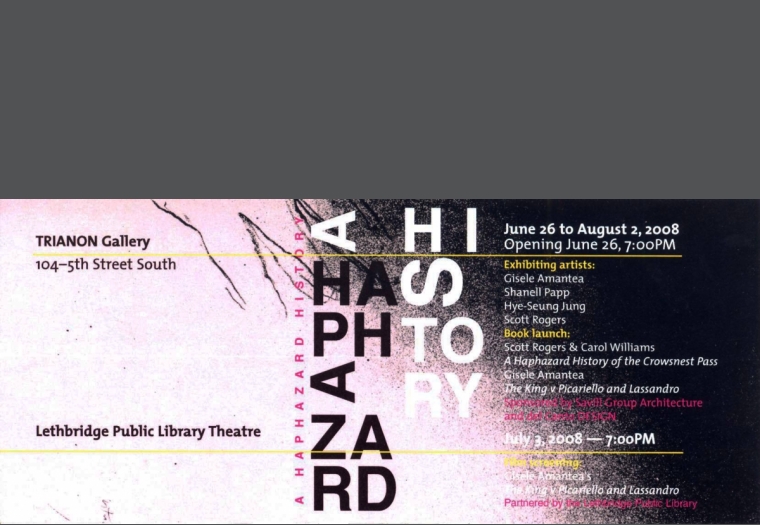A Haphazard History
A Haphazard History
Gisele Amantea, Shanell Papp, Hye-Seung Jung, Scott Rogers
A Haphazard History features the work of four contemporary artists: Scott Rogers and Hye Seung Jung of Calgary; Shanell Papp of Lethbridge; Gisele Amantea of Montreal; and one writer, Carol Williams, also of Lethbridge. The exhibition constitutes five diverse responses to a concrete regional socio-political geography and history of the Crowsnest Pass. The artists are age and experience distinct as well as heterogeneous in ethnic, cultural and class identity.
The Crowsnest Pass is not a single location but rather sixty miles of towns of former mining communities stretching from the most easterly town of Lundbreck on the Alberta side of the provincial boundaries heading west to Elko in British Columbia. The Pass, described by one writer as “a tunnel of perpetual winds” is perhaps best known for the Frank Slide, a catastrophic movement of 3 square kilometers of limestone off Turtle Mountain that occured on April 29, 1903 at 4:10am (Wilson, 2005). At least two government reports determined that the slide was triggered by mining activity in the region’s first mine operated by the Canadian American Coal and Coke Company. Between 60 to 80 sleeping residents in the Frank town side at the base of Turtle Mountain lost their lives. 19 miners were buried inside the Frank mine. 17 managed to dig themselves out.
Resisting or responding to, these conventions of interpretation, the artwork in The Haphazard History eccentrically redress the processes by which contemporary post-industrial economies are retooled through the misty liberalism of tourism
– C Williams
